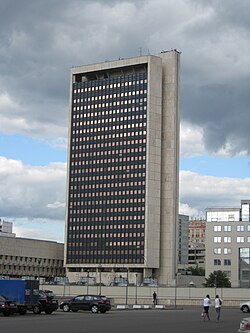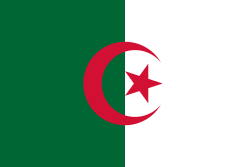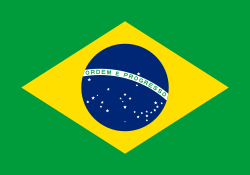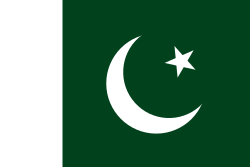Ryska rymdflygstyrelsen
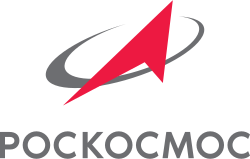
Roskosmos, sedan 2015 officiellt Statliga enheten för rymdverksamhet Roskosmos (ryska: Государственная корпорация по космической деятельности «Роскосмос») är den statliga enhet (på ryska en så kallad "statlig korporation") i Ryssland som ansvarar för landets rymdprogram. Den motsvarar Sveriges Rymdstyrelsen. I USA ansvarar NASA för motsvarande verksamhet och inom EU är ESA samverkansorgan för medlemsländernas individuella program.
Roskosmos kom till efter att Sovjetunionen och dess rymdprogram upplösts 1991. Huvudkontoret ligger i Stjärnstaden utanför Moskva och hette ursprungligen 1992 Ryska rymdstyrelsen underställd Ryska Federationens regering (ryska: Российское космическое агентство при Правительстве РФ), bytte senare samma år namn till Ryska rymdstyrelsen för att byta namn igen 1989 till Ryska flyg- och rymdstyrelsen (ryska: Российское авиационно-космическое агентство) , 2004 till Federala rymdstyrelsen Roskosmos (ryska: Федеральное космическое агентство «Роскосмос») och sedan återigen 2015 till dess nuvarande namn Statliga enheten för rymdverksamhet Roskosmos[1] (ryska: Госкорпорация «Роскосмос»).
Den statliga enheten styr även den civila delen av det ryska rymdprogrammet och de första åren efter Sovjetunionens fall bestod verksamheten framför allt av att skicka upp privatfinansierade satelliter och även rymdturister då ekonomin var mycket dålig. Under denna tid förekom väldigt få forskningsuppdrag, men man lyckades i alla fall finansiera rymdstationen Mir, bidra till ISS och fortsätta flyga med Sojuz och Progress samt starta Mars-500-projektet. Numera är ekonomin dock relativt god på grund av landets ekonomiska tillväxt.
Chefer
- Jurij Koptev (februari 1992 – mars 2004)
- Anatolij Perminov (mars 2004 – april 2011)
- Vladimir Popovkin (april 2011 – oktober 2013)
- Oleg Ostapenko (oktober 2013 – januari 2015)
- Igor Komarov (januari 2015 – maj 2018)
- Dmitrij Rogozin (maj 2018 – juli 2022)
- Jurij Borisov (juli 2022 – )
Referenser
- Den här artikeln är helt eller delvis baserad på material från engelskspråkiga Wikipedia, tidigare version.
Noter
- ^ ”State space corporation ROSCOSMOS |”. en.roscosmos.ru. Arkiverad från originalet den 2 september 2019. https://web.archive.org/web/20190902070234/http://en.roscosmos.ru/. Läst 15 oktober 2020.
| ||||||||||||||||||||
Media som används på denna webbplats
Kanadas flagga, införd 1965; denna version med Pantone‐nyanser. Nuvarande utformning ersatte den tidigare kanadensiska Red Ensign.
The Flag of Europe is the flag and emblem of the European Union (EU) and Council of Europe (CoE). It consists of a circle of 12 golden (yellow) stars on a blue background. It was created in 1955 by the CoE and adopted by the EU, then the European Communities, in the 1980s.
The CoE and EU are distinct in membership and nature. The CoE is a 47-member international organisation dealing with human rights and rule of law, while the EU is a quasi-federal union of 27 states focused on economic integration and political cooperation. Today, the flag is mostly associated with the latter.
It was the intention of the CoE that the flag should come to represent Europe as a whole, and since its adoption the membership of the CoE covers nearly the entire continent. This is why the EU adopted the same flag. The flag has been used to represent Europe in sporting events and as a pro-democracy banner outside the Union.bendera Indonesia
Flag of Iran. The tricolor flag was introduced in 1906, but after the Islamic Revolution of 1979 the Arabic words 'Allahu akbar' ('God is great'), written in the Kufic script of the Qur'an and repeated 22 times, were added to the red and green strips where they border the white central strip and in the middle is the emblem of Iran (which is a stylized Persian alphabet of the Arabic word Allah ("God")).
The official ISIRI standard (translation at FotW) gives two slightly different methods of construction for the flag: a compass-and-straightedge construction used for File:Flag of Iran (official).svg, and a "simplified" construction sheet with rational numbers used for this file.
Flag of Israel. Shows a Magen David (“Shield of David”) between two stripes. The Shield of David is a traditional Jewish symbol. The stripes symbolize a Jewish prayer shawl (tallit).
(c) Александр Спиридонов, CC BY 3.0
Roscosmos buildings - Moscow, Schepkina Street
MAVEN at Mars, Artist's Concept. This artist's concept depicts NASA's Mars Atmosphere and Volatile EvolutioN (MAVEN) spacecraft near Mars. MAVEN is in development for launch in 2013 and will be the first mission devoted to understanding the Martian upper atmosphere. The mission's principal investigator is Bruce Jakosky from the Laboratory for Atmospheric and Space Physics at the University of Colorado.
The goal of MAVEN is to determine the role that loss of atmospheric gas to space played in changing the Martian climate through time. MAVEN will determine how much of the Martian atmosphere has been lost over time by measuring the current rate of escape to space and gathering enough information about the relevant processes to allow extrapolation backward in time.
NASA Goddard Space Flight Center in Greenbelt, Md. manages the project and will also build some of the instruments for the mission. In addition to the principal investigator coming from CU-LASP, the university will provide science operations, build instruments, and lead education/public outreach. Lockheed Martin of Littleton, Colo., is building the spacecraft and will perform mission operations. The University of California-Berkeley Space Sciences Laboratory is also building instruments for the mission. NASA's Jet Propulsion Laboratory, Pasadena, Calif., will provide navigation support, the Deep Space Network, and the Electra telecommunications relay hardware and operations.
For more information about MAVEN, visit www.nasa.gov/maven.Logo of the Russian Federal Space Agency, commonly called Roscosmos, and abbreviated as FKA and RKA.
